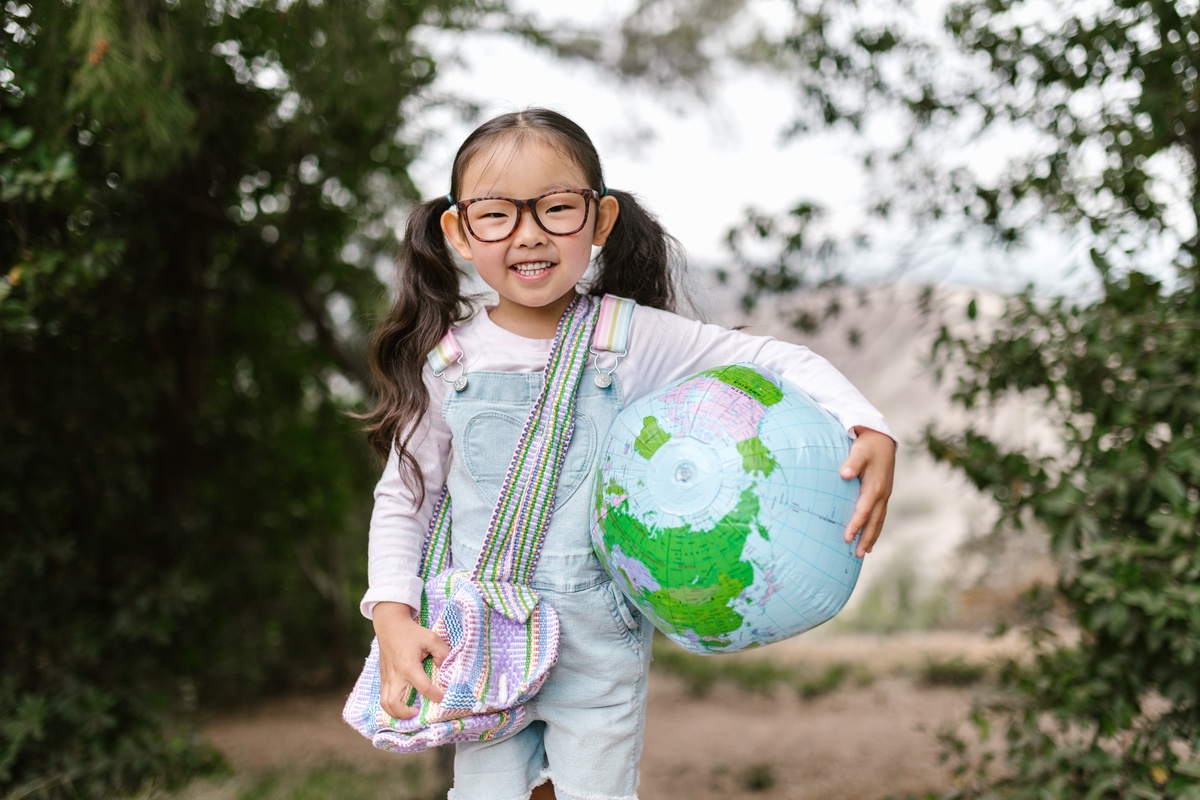“Mommy, Why does that woman look like that? Daddy, why is that man dressing like that?”. If you're a parent you probably have been through one of these embarrassing moments. Navigating the candid curiosity of children, who often vocalize their observations and inquiries about people's appearances without a filter. This unfiltered curiosity, though sometimes loud and in awkward situations, opens a gateway to broader discussions in regards to the rich fabric of human diversity.
By embracing these moments to educate our young ones about the myriad cultures and identities that populate our world, we foster a foundation of respect and empathy. Cultivating an environment where differences are not just acknowledged but celebrated, we guide our children towards becoming compassionate individuals who value and uplift the uniqueness of every person they encounter.
- Exploring World Cuisine
Introduce your youngster to the wide variety of international cuisines. Cooking together meals from other nations may be a fun and interesting way to talk about the dishes' origins, common components, and cultural significance behind certain recipes. This hands-on approach not only educates but also stimulates the taste buds, making the learning experience unforgettable.
- Cultural Storytime
Set aside time for reading books that showcase stories and fairy tales from around the globe. Choose books with rich illustrations and characters from diverse backgrounds to spark conversations about the different ways people live, celebrate, and see the world. This can help children understand and appreciate the vast array of cultures beyond their own.
- Music and Dance from Around the World
Music and dance are universal languages that express the soul of a culture. Expose your child to different musical styles and dance forms from various countries. Watching performances or participating in dance classes can be a joyful way to learn about the emotions, stories, and history embedded in these art forms.
- Celebrating International Festivals
Participate in local events or festivals that celebrate international cultures. Many communities host cultural fairs where families can experience different traditions through games, performances, and crafts. This direct exposure allows children to observe and partake in the celebrations that make each culture unique.
- Language Learning
Encourage your child to learn a new language. Even basic phrases or greetings in another language can open doors to understanding and respecting another culture. Language learning apps, children’s books, or classes can make this process fun and accessible, fostering a sense of connection with people who speak that language.
Cultural Exposure Through Four Diverse Cultures
- United States: The Cultural Phenomenon of Star Wars
The United States is a melting pot of cultures, with Star Wars emerging as a key cultural icon, illustrating the nation's narrative prowess, inventive spirit, and a deep-seated belief in the battle between light and darkness. Created by George Lucas, this sprawling space saga goes beyond just being a source of entertainment; it embeds itself into the fabric of American ideals like bravery, liberty, and the ongoing battle against tyranny. It's a mirror to the American ethos of storytelling, innovation, and the relentless quest for what lies beyond.
Introducing children to this aspect of American culture can be conventional, particularly through interactive art kits such as ‘Boba Fett Paint By Numbers’, ‘Darth Vader Paint By Numbers’ and ‘Grogu Paint By Numbers’. These art projects offer a hands-on and engaging way to delve into the narrative depth and artistic innovation of Star Wars, allowing kids to explore American cultural themes while engaging in the joy of creation.
- Japan: Harmony in Tradition and Modernity
Japan presents a fascinating blend of ancient traditions and cutting-edge technology, embodied in its meticulous tea ceremonies and the global influence of anime and manga. Teaching children about Japan can involve exploring the country's dedication to craftsmanship, respect for nature, and the significance of festivals like Hanami (cherry blossom viewing). This exposure highlights the importance of balance, respect, and the beauty found in both the natural and the created world.
- India: A Mosaic of Languages and Festivals
India's diversity is vividly seen in its languages, religions, and festivals. Introducing children to India can mean participating in Diwali, the festival of lights, or learning about the country's rich history of storytelling through classical dances and the epic tales of the Ramayana and the Mahabharata. India's culinary diversity, colorful attire, and the value it places on family and community offer lessons on cultural richness and the importance of traditions.
- Brazil: The Vibrancy of Carnival and Football
Brazil's culture pulsates with the rhythm of samba and the passion for football, symbolizing the country's vibrant spirit and communal joy. Carnival, an annual festival, showcases Brazil's incredible diversity through music, dance, and elaborate costumes, teaching about the art of celebration and the significance of cultural expression. Football in Brazil is more than a sport; it's a unifying force that reflects the nation's love for beauty, skill, and joy in life's simple pleasures.
In navigating the journey of cultural exploration with our children, we embark on a meaningful adventure that goes beyond mere knowledge acquisition. By engaging in activities from exploring world cuisines, learning new languages, exploring global dance costumes and music, to interactive Star Wars paint by numbers kits, we lay down the stepping stones for our young ones to become compassionate global citizens. Each story read, dish cooked, or festival celebrated is a brushstroke in the broader picture of human diversity. As we continue to unfold the endless layers of cultures and traditions around us, we inspire the next generation to build a world where differences are not just accepted but cherished. What new cultural discovery will you and your child explore next?


No comments yet